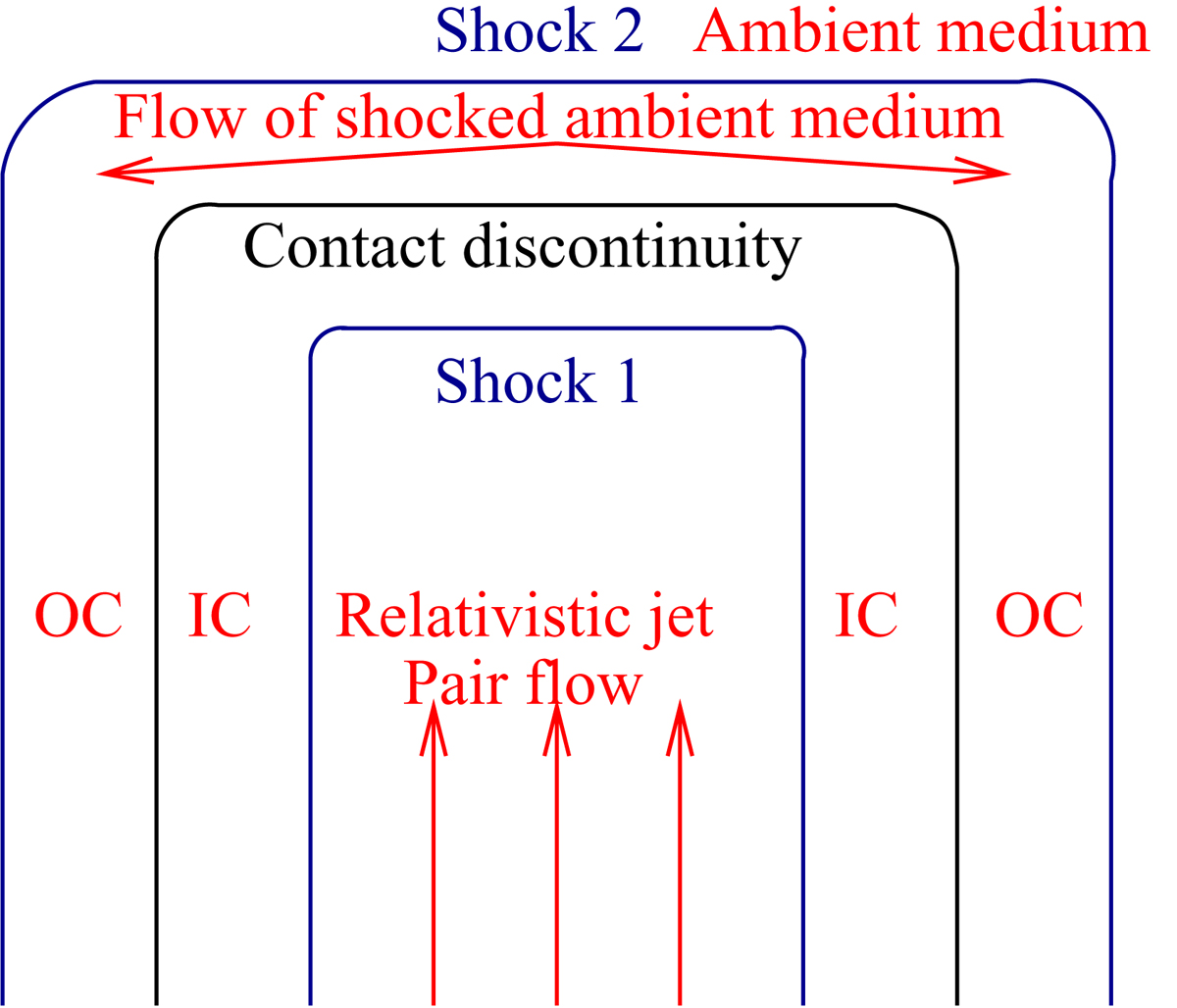Fig. 1.

Hydrodynamic jet model: a contact discontinuity separates the jet material from the outer cocoon, which is formed by the ambient material that was expelled by the jet. The outer cocoon is separated by the shock 2 from the ambient material that has not yet been affected by the jet. Shock 2 at the head of the jet heats the ambient material that crosses the shock and allows it to expand laterally. The shocked ambient plasma flows around the contact discontinuity and into the outer cocoon (OC). The energy required to displace the ambient material is provided by the jet material, which flows towards the contact discontinuity at a relativistic speed. It cannot cross this discontinuity; it is slowed down and heated up as it approaches it. Shock 1 forms, which separates the fast-flowing jet material from the shocked jet material close to the contact discontinuity also known as the inner cocoon (IC). The thermal pressure of the inner cocoon pushes the discontinuity outwards.
Current usage metrics show cumulative count of Article Views (full-text article views including HTML views, PDF and ePub downloads, according to the available data) and Abstracts Views on Vision4Press platform.
Data correspond to usage on the plateform after 2015. The current usage metrics is available 48-96 hours after online publication and is updated daily on week days.
Initial download of the metrics may take a while.


